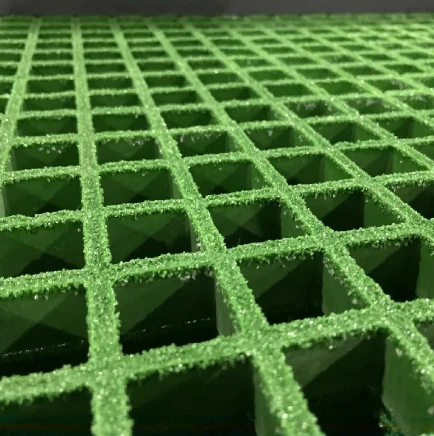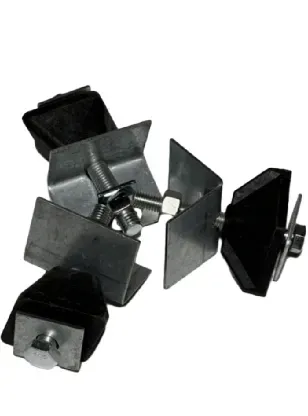loading...
- No. 9, Xingyuan South Street, Dongwaihuan Road, Zaoqiang County, Hengshui, Hebei, China
- admin@zjcomposites.com
- +86 15097380338
- Welcome to visit our website!
FRP Grating Lightweight & Corrosion-Resistant Walkway Solutions
- Understanding the Structural Advantages of FRP Grating
- Material Durability in Harsh Environments
- Comparative Analysis: FRP vs. Steel & Aluminum
- Custom Design Solutions for Industrial Needs
- Installation Best Practices & Cost Efficiency
- Real-World Applications Across Industries
- Sustainable Future with FRP Grating Innovations

(frp grating)
Why FRP Grating Outperforms Traditional Materials
Fiber Reinforced Plastic (FRP) grating delivers 40% higher strength-to-weight ratios than steel alternatives while reducing maintenance costs by 60-75% over a 25-year lifecycle. Its non-conductive properties and resistance to chemicals like sulfuric acid (H₂SO₄) at concentrations up to 95% make it ideal for chemical plants and offshore platforms. Unlike metal gratings, FRP variants eliminate galvanic corrosion risks in saltwater environments.
Critical Performance Metrics
| Property | FRP Grating | Steel Grating | Aluminum |
|---|---|---|---|
| Corrosion Resistance | 100% | 35% | 70% |
| Weight (kg/m²) | 12-18 | 40-60 | 20-25 |
| Load Capacity (kN/m²) | 5.0 | 6.5 | 4.2 |
| Lifecycle Cost (25y) | $220 | $890 | $540 |
Manufacturer Comparison
Leading FRP grating producers differentiate through resin formulations. For example, Company A's vinyl ester resin withstands pH levels from 1-14, while Company B's fire-retardant grades achieve ASTM E84 Class A ratings. Third-party testing confirms load retention of 92% original strength after 15,000+ cycles at 10kN/m².
Customization Capabilities
Modular FRP walkway grating systems accommodate spans up to 3.8m without support beams. Custom mold options enable:
- Anti-slip surfaces with 45° serrated edges
- UV-stabilized pigmentation (RAL codes)
- Integrated drainage slots (10-50mm width)
Proven Industry Applications
A 2023 case study shows 2,800m² of FRP grating installation at Singapore’s Tuas Water Reclamation Plant reduced structural steel tonnage by 47%. Petrochemical facilities report 83% fewer downtime incidents compared to carbon steel walkways.
FRP Grating in Modern Infrastructure
Recent advancements incorporate IoT-enabled gratings with embedded strain sensors, detecting load anomalies within ±2.5% accuracy. Global demand is projected to grow at 6.8% CAGR through 2030, driven by wastewater treatment expansions and renewable energy projects requiring lightweight, maintenance-free platforms.

(frp grating)
FAQS on frp grating
Q: What are the advantages of FRP grating walkways over traditional materials?
A: FRP grating walkways are lightweight, corrosion-resistant, and non-conductive, making them ideal for corrosive or electrical hazard environments. They also require minimal maintenance and have a longer lifespan than steel or wood.
Q: How is FRP walkway grating installed securely?
A: FRP walkway grating installation involves using corrosion-resistant fasteners like stainless steel clips or bolts. Proper alignment and spacing between panels ensure structural integrity and load distribution.
Q: Can FRP grating be customized for specific walkway applications?
A: Yes, FRP grating can be tailored in mesh size, thickness, and resin types to meet load requirements, chemical exposure, or slip-resistance needs for different industrial settings.
Q: What maintenance is required for FRP grating walkways?
A: FRP grating requires only periodic cleaning with water and mild detergent. Avoid abrasive tools or harsh chemicals to preserve the surface and structural properties.
Q: Why choose FRP grating for elevated walkways in chemical plants?
A: FRP grating resists acids, alkalis, and solvents common in chemical plants. Its non-sparking nature and high strength-to-weight ratio enhance safety and ease of installation in elevated areas.
-
The Rise of FRP Profiles: Strong, Lightweight, and Built to LastNewsJul.14,2025
-
SMC Panel Tanks: A Modern Water Storage Solution for All EnvironmentsNewsJul.14,2025
-
GRP Grating: A Modern Solution for Safe and Durable Access SystemsNewsJul.14,2025
-
Galvanized Steel Water Tanks: Durable, Reliable, and Ready for UseNewsJul.14,2025
-
FRP Mini Mesh Grating: The Safer, Smarter Flooring SolutionNewsJul.14,2025
-
Exploring FRP Vessels: Durable Solutions for Modern Fluid HandlingNewsJul.14,2025
-
GRP Structures: The Future of Lightweight, High-Performance EngineeringNewsJun.20,2025
